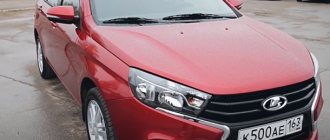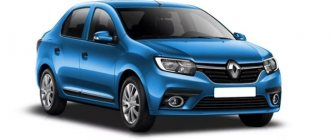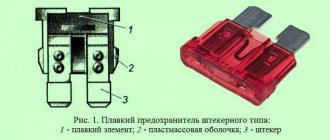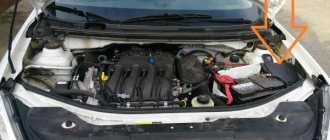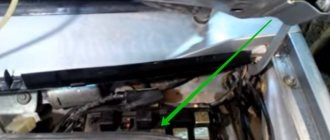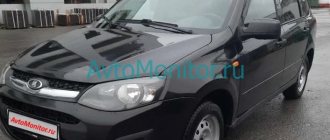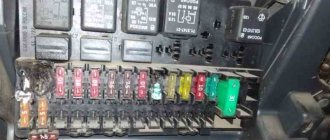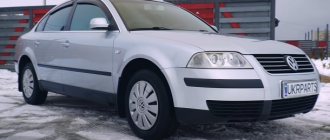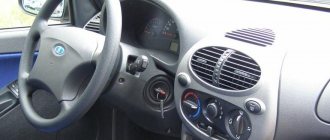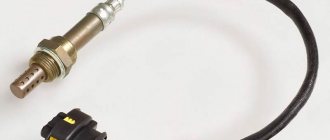The Lada Kalina fuse box, often also called a black box, relay box or mounting block, is the very place where the electrical elements responsible for the proper operation of all electrical circuits of the vehicle are located. They are located according to a special scheme, which allows you to quickly determine what the required fuse is responsible for and where it is located. We will get acquainted with circuits for Lada Kalina of both generations and a list of relays and fuses for each generation.
Lada Kalina fuse box diagram
There are two generations of the Lada Kalina.
The first generation model is the VAZ 1118 sedan since 2004. Since 2006, the family’s hatchback has rolled off the assembly line, and in 2008, a station wagon. Preparations for the release of the second generation began in 2011, when production of the sedan ceased, and a new copy was first presented in 2012. The latest variation of the family, Lada Cross, was launched by the automaker in 2014. The trim levels were produced with both 8 and 16 valve engines. In old and new Kalina cars, the fuse mounting block is located on the driver's left foot side, next to the external headlight control. To get there, open the lid by first pulling the bottom left corner and releasing the latch. Next, they begin to release the middle and then the right locking points from below. When the bottom ones are open, proceed to the top ones, after which you can remove the lid.
Installing the block cover in place occurs in a slightly different order - they start with the right fasteners, continue with the installation of the upper ones, and end with the lower ones. It is important that all fasteners fit accurately into the metal clamps.
The designation and numbering of each of the fuses installed on this modification of Kalina, as well as the relays (indicated by the letter K), can be seen on the block cover. Their set differs depending on the configuration.
| Fuse number | Current strength, amperes | Protected circuit in the “Standard” package | Available in “Norma” and “Lux” configurations |
| F1 | 15 | Ignition coils, Injectors, Engine control controller | |
| F2 | 10/30 | Daytime running lights | Power supply for the body electronics central unit, Driver's door module. |
| F3 | 10/15 | Alarm | Automatic transmission controller power supply, Automatic transmission control drive. |
| F4 | 15 | Airbag system controller | |
| F5 | 7,5 | Terminal 15 devices | |
| F6 | 7,5 | Reversing light | Reverse Light, Automatic Transmission Controller |
| F7 | 7,5 | Canister purge valve, mass air flow sensor/pressure sensor, DC | Canister purge valve, mass air flow sensor/pressure sensor, phase sensor, DC. |
| F8 | 7,5 | Direction indicators | Spare |
| F9 | 5 | Side lights on the starboard side. | |
| F10 | 5 | Parking lights on the left side, Illumination of instruments and keys, License plate lights, Luggage and glove box lighting. | |
| F11 | 5 | Rear PTFs. | |
| F12 | 10 | Low beam and power supply for starboard electric corrector. | |
| F13 | 10 | Low beam and power supply for the left side electric corrector. | |
| F14 | 14 | Spare | |
| F15 | 10 | Rear window washer, Rear window wiper | |
| F16 | 5 | Spare | Driver door module |
| F17 | Spare | Spare | |
| F18 | Spare | Spare | |
| F19 | 20 | Door lock | Spare |
| F20 | Spare | ||
| F21 | 10 | Right high beam headlight | |
| F22 | 10 | Left high beam headlight | |
| F23 | 10 | Spare | Right fog lamp |
| F24 | 10 | Spare | Left fog lamp |
| F25 | 15 | Heated front seats | |
| F26 | 5 | Anti-lock brake control unit | |
| F27 | 15 | Cigarette lighter | |
| F28 | 15 | Fuel pump | |
| F29 | 20 | Windshield washer | Windshield washer, Central body electronics unit |
| F30 | Spare | ||
| F31 | 7,2 | Spare | Air conditioning compressor clutch, Automatic climate control system controller |
| F32 | 7,5 | Brake lights, Interior lighting | |
| F33 | 25 | Anti-lock brake control unit | |
| F34 | 5 | Instrument cluster, Diagnostic connector | |
| F35 | 10 | Spare | Central body electronics unit |
| F36 | 10 | Sound signal | |
| F37 | 10 | Radio/Multimedia system | |
| F38 | Spare | ||
| F39 | Spare | ||
| F40 | Spare | ||
| F41 | Spare | ||
| F42 | Electric windows | Spare | |
| F43 | 50 | Spare | AMT controller |
| F44 | 30 | Electric heater fan | Electric heater fan, Automatic climate control system controller |
| F45 | 25 | Heated rear window | |
| F46 | Spare | ||
The fuse amperage may vary depending on the configuration, so for some numbers there are two.
In 2022, VAZ equipped one of the versions (abbreviated OVI) of the Lada Kalina with the “ERA-GLONASS” function. In the new version, the set of fuses has changed slightly. Now it looks like this.
| Fuse number | Current strength, ampere | Protected Circuits |
| F1 | 15 | Minimum speed radiator fan relay K18 (version with air conditioning or climate control) |
| Maximum speed radiator fan relay K4 | ||
| Air conditioning compressor clutch relay K10 (version with air conditioning or climate control) | ||
| Motor Controller | ||
| Cylinder injectors | ||
| Ignition coils (for internal combustion engines with 16 valves) | ||
| F2 | 7,5 | Intake pipe damper valve (ICE 21127 for 16 valves) |
| Canister purge valve | ||
| Oxygen sensors | ||
| Phase sensor (for internal combustion engines with 16 valves) | ||
| Mass air flow sensor (for 8-valve internal combustion engine or 16-valve engine 21126) | ||
| AMT selector (version with AMT controller) | ||
| Tire pressure monitoring system control unit (terminal 30) (for EURO-6 vehicles) | ||
| F3 | 5 | Anti-Lock Brake Controller / Stability Control Controller |
| F4 | 15 | Airbag system control controller |
| F5 | 7,5 | Starter Relay K2/Automatic Transmission Controller |
| Unloading relay of ignition switch K1 | ||
| Rear window heating relay K6 | ||
| Seat heating relay K13 (OVI) | ||
| Heated windshield relay K14 (OVI) | ||
| Fuel pump relay K12 | ||
| Motor Controller | ||
| Audio system | ||
| Electric Power Steering Controller | ||
| Wiper switch | ||
| Central body electronics unit (CBE) | ||
| Terminal block "ERA-GLONASS" | ||
| Clutch pedal switch (for manual transmission) | ||
| Brake pedal switch | ||
| Instrument cluster | ||
| Door lock system control unit (OVI) | ||
| Driver's door lock switch | ||
| Air conditioner switch (AVI) | ||
| Automatic transmission speed sensor (ATS) | ||
| Automatic transmission mode switch (OVI) | ||
| AMT controller (OVI) | ||
| Tire pressure monitoring system control unit (for EURO-6 vehicles) | ||
| F6 | 7,5 | Reversing light |
| Direction indicators | ||
| Parking system control unit (PSU) | ||
| F7 | 10 | Starboard high beam |
| F8 | 10 | Left side high beam |
| F9 | 5 | Side lights on the starboard side |
| F10 | 5 | Left side marker lights |
| License plate lights | ||
| Trunk light | ||
| Illumination of instruments and keys | ||
| F11 | 5 | Rear fog lights |
| F12 | 10 | Starboard low beam |
| F13 | 10 | Left side low beam |
| Electrical headlight adjustment control (OVI) | ||
| F14 | 20 | Central body electronics unit: |
| (Windshield wiper) (OVI) | ||
| Windshield washer | ||
| Windshield wiper | ||
| Steering column wiper switch | ||
| F15 | 10 | Rear window wiper |
| Rear window washer | ||
| F16 | Spare | |
| F17 | Spare | |
| F18 | Spare | |
| F19 | Spare | |
| F20 | Spare | |
| F21 | 15 | Fuel pump motor |
| F22 | 7,5 | Brake light switch |
| Brake lights | ||
| Additional brake signal | ||
| Anti-Lock Brake Controller/ Stability Control Controller | ||
| AMT controller (OVI) | ||
| F23 | 5 | Instrument cluster |
| Diagnostic connector | ||
| F24 | 10 | Horn relay K8 |
| Sound signal | ||
| F25 | 15 | Socket for connecting additional consumers in the cabin |
| F26 | 5 | Terminal block "ERA-GLONASS" |
| F27 | 10 | Starboard fog lamp (OVI) |
| F28 | 10 | Left side fog lamp (OVL) |
| F29 | 15 | Heated front seats (OVI) |
| F30 | 10 | Audio system |
| F31 | 10 | Central body electronics unit: (Direction indicators; Body electronics unit power supply) (OVI) |
| F32 | 30 | Central body electronics unit: (Power windows; Door and trunk locks; Rain sensor; Glove box light; Trunk light; Interior light unit; Daytime running lights) (OVI) |
| F33 | 5 | Driver door module |
| F34 | 7,5 | Air conditioning compressor clutch (version with air conditioning or climate control) |
| Automatic climate control system controller (AVI) | ||
| F35 | 15 | Automatic transmission controller (ATC) |
| Automatic transmission control drive (ATG) | ||
| F36 | 15 | Alarm |
| F37 | 15 | Trunk lock actuator switch |
| Door lock control unit | ||
| 5 | Trunk lock actuator switch | |
| F38 | 10 | Daytime running lights |
| F39 | 15 | Cartridge for connecting additional consumers in the trunk |
| F40 | 10 | To the trailer lighting connector |
| F41 | 50 | Heated windshield (OVI) |
| F42 | 30 | Heated exterior mirrors (OVI) |
| Heated rear window | ||
| F43 | 50 | AMT controller (OVI) |
| F44 | 30 | Electric heater fan |
| Controller for automatic climate control system (for certain versions (OVI)) | ||
| F45 | 30 | Power windows for front doors |
| F46 | Spare |
The list of fuses is presented for the luxury version of the “Era-GLONASS” version. The standard set is similar to the version of previous versions of Kalina.
The fuses are located in a special block located in the Lada engine compartment. As in the case of fuses in the cabin, there is a difference between the set in versions of the car without the Era-GLONASS complex and with it.
In the first case, the list looks like this:
| Fuse number | Current strength, ampere | Protected Circuits |
| FF1 | 50 | Heated windshield |
| FF2 | 60 | Generator |
| FF3 | 60 | Generator |
| FF4 | 30 (with air conditioning - 40) | Electric radiator cooling fan |
| FF5 | 50 | Electromechanical power steering |
| FF6 | 40 | Anti-lock brake control unit |
The list of fuses for the Lada Kalina in the version with the ERA-GLONASS function looks like this:
| Fuse number | Current strength, ampere | Protected circuit |
| FF1 | 60 | Generator |
| FF2 | 60 | Generator |
| FF3 | 30 | Electric radiator cooling fan |
| 40 | Electric radiator cooling fan (version with air conditioning or climate control) | |
| FF4 | 40 | Anti-Lock Brake Controller / Stability Control Controller |
| FF5 | 25 | Anti-Lock Brake Controller / Stability Control Controller |
| FF6 | 50 | Electric Power Steering Controller |
You can learn more about Kalina fuses from the video.
Fuse box in the passenger compartment
You can find it near the driver's seat on the left of the steering wheel. To get to the internal filling, you need to open the block cover, pull the ebb at its upper left corner, which opens the left side, and then repeat the same manipulation on the right. After this, the cover can be easily removed.
Engine control systems fuse box
It is located on the front passenger side.
| Number | Power, ampere | What is he responsible for? |
| 1 | 15 | Main motor control relay |
| 2 | 15 | Fuel pump relay |
| 3 | 15 | Motor control unit DC circuits |
The power of all relays in this block is 15 Amps.
Circuits protected by fuses
| Name | Power | What is he responsible for? |
| F1 | 10 | Instrument clusters, taillight switch and immobilizer control, climate control (luxury) |
| F2 | 30 | Window lifters |
| F3 | 10 | Ignition, hazard lights off |
| F4 | 20 | Windshield wipers, heated rear window and seats, airbag controls |
| F5 | 25 | Heating, electric power, window washer |
| F6 | 20 | Sound signal |
| F7 | 10 | Lighting control, brake light off, immobilizer, on-board computer |
| F8 | 20 | Heated rear window relay |
| F9 | 5 | Right side light, immobilizer, glove box light |
| F10 | 5 | Left side light and side headlight indicator, license plate light |
| F11 | 7,5 | Rear fog lights, immobilizer |
| F12 | 7,5 | Right low beam, right light correction gear motor, light switching control, immobilizer |
| F13 | 7,5 | Left low beam, left gear motor, light switching control |
| F14 | 10 | Low right headlights, high beam indicator |
| F15 | 10 | Left high beam |
| F16 | 10 | Right fog light |
| F17 | 10 | Left fog light |
| F18 | 15 | Seat heating relay |
| F19 | 10 | ABS |
| F20 | 15 | Cigarette lighter |
| F21 | 10 | Reverse speed lockout solenoid |
| F22 | 15 | Anti-theft, electrical control |
| F23 | — | |
| F24 | 7,5 | A/C compressor clutch |
| F25 | 30 | Electrical package management |
| F26 | 25 | ABS |
| F27 | 5 | Reserve |
| F28 | 7,5 | Reserve |
| F29 | 10 | Reserve |
| F30 | 20 | Reserve |
| F31 | 50 | Electric power steering |
| F32 | 40 | ABS |
The control unit of the Lada Kalina contains many backup fuses. In addition to them, there are 12 relays.
Video instruction
Sometimes a complete replacement of the device is required. To do this, you need spare parts and a standard screwdriver. The order of work is as follows.
- Open the hood, find the battery and remove the negative terminal from it.
- We unscrew the three mounting bolts around the parking brake handle, which is located on top of the central tunnel. We dismantle the hand brake limit switch.
- We unscrew the rear fastening screw, as well as additional screws on the sides.
- Remove the cover from the gear lever, and then lift the tunnel cover.
- We disconnect the power plug coming to the electrical wiring circuit.
- We press the special latches that hold the device itself. Once it pops out, you can replace it.
- Next, we install the new part on the Lada Kalina and carry out the reassembly process.
The video below will help you understand where it is located and how to replace the cigarette lighter fuse of the Lada Kalina model.
PROMOTION: SALE OF NEW CAR 2022 PRODUCTION
Relay layout
Engine control systems relay block
It is located near the battery on the right side of the tunnel.
Purpose of the relays installed in the block
There are 5 relays installed inside the block:
- K1 - is responsible for turning on the fuel pump;
- K2 - electric fan of the cooling system;
- K2 — turning on the cooling fan at low speed;
- K3 - main relay;
- K5 - turns on the cooling fan at high speed.
The power of K2 is 50 amperes.
Location of additional fuses in Lada Kalina
Three additional fuses and a diagnostic connector in the Lada Kalina are located under the central panel.
Purpose of fuses
| № | Denomination (A) | Purpose |
| F1 | 15 | Main relay circuits (winding of the cooling system electric fan relay, canister purge valve, air flow sensor, speed sensor, oxygen concentration sensor, ignition coil) |
| F2 | 15 | Fuel pump fuse Lada Kalina |
| F3 | 15 | Constant power supply circuit of the electronic engine control unit |
Lada Kalina relay location
The safety relays are located in the same block to the left of the driver's foot as the fuses. Below is a list for the main configurations of Kalina. In the case of the more expensive “Norma” and “Lux”, it is necessary to take into account that the difference between them is minimal, but it still exists and some of the relays are missing in the first.
| Relay number | Current strength, ampere | Purpose in the “Standard” package | Purpose in the “Norma” and “Lux” trim levels |
| K1 | 50 | Unloading relay | |
| K2 | 30 | Additional starter relay | |
| K3 | 30/40 | Wiper relay | Radiator cooling fan relay |
| K4 | 30 | Radiator cooling fan relay | |
| K5 | 30 | Turn signal relay | A/C compressor clutch relay |
| K6 | 30 | Power window relay | Heated rear window relay |
| K7 | 20 | High beam relay | |
| K8 | 20 | Horn relay | |
| K9 | 20 | Low beam relay | |
| K10 | 20 | Spare | Reverse light relay (in versions with automatic transmission) |
| K11 | 20 | ECM main relay | |
| K12 | 20 | Fuel pump relay | |
| K13 | 20 | Seat heating relay | |
| K14 | 30/70 | Alarm relay | Heated windshield relay |
| K15 | 30 | Heated rear window relay | — |
| K16 | 30 | Additional alarm relay | — |
Owners of Kalina with the ERA-GLONASS function will find the following relays in their mounting block:
| Relay number | Current strength, ampere | Relay purpose |
| K1 | 50 | Ignition switch unloading relay |
| K2 | 30 | Additional starter relay |
| K3 | 30 | Windshield Wiper Relay (WWI) / Auto Start Relay |
| K4 | 30 | Maximum speed radiator fan relay (HSF) |
| K5 | 30 | Turn and hazard warning relay (OVI) |
| K6 | 30 | Heated rear window relay |
| K7 | 20 | High beam relay |
| K8 | 20 | Horn relay |
| K9 | 20 | Low beam relay |
| K10 | 20 | Air conditioning compressor clutch relay (version with air conditioning or climate control) |
| K11 | 20 | ECM main relay |
| K12 | 20 | Fuel pump relay |
| K13 | 20 | Seat heating relay (HSI) |
| K14 | 70 | Heated windshield relay (for certain versions (OVI)) |
| K15 | 20 | Alarm relay |
| K16 | 30 | Hazard power relay/reverse lamp relay |
| K17 | 30 | Power window power relay/radiator fan relay in auto start mode |
| K18 | 30 | Minimum speed radiator fan relay (MRF) |
Lada Kalina fuse tables
Where is the starter relay located?
It is located in the mounting block along with the fuses. The latter is located to the left of the steering column and the position of the driver's feet. Its cover can be identified by the location of the headlight and instrument panel dimmers on it.
Fuel pump relay location
It is located among other electrical elements of this type in the mounting block. To get to it, you need to open the cover using a small flat-tip screwdriver and find the element numbered K12.
Fan relay location
Responsible for cooling the radiator and its serviceability must be checked if overheating is detected. In the standard configuration it is designated as K4, and in the luxury configuration it is also designated as K3. You can get to it in the same way as other similar elements - by opening the cover of the fuse box located on the left side of the center console and bringing it out using a ten key.
Turning relay location
Relay number K5, located on the diagram in its upper left part, is responsible for the turn. The element, like other relays, is placed in the fuse box located in the interior of the Lada Kalina.
Wiper relay location
The windshield wiper relay has the number K3 for standard Lada Kalina equipment and is located among other electrical elements in a special block, together with the electrical circuit fuses.
Power fuses
| Name | Power, ampere | What is he responsible for? |
| FF1 | 50 | Heated windshields |
| FF2 | 60 | — |
| FF3 | 60 | Generator |
| FF4 | 40 | Motor cooling fan |
| FF5 | 50 | Electric power steering |
| FF6 | 40 | Motor ABS |
Replacement process
In order to change the cigarette lighter fuse of the Lada Kalina model, you need to get to the mounting block. It should be located behind the decorative panel, on the left side of the front console.
- We snap off the plastic clips.
- We take the tweezers located in the mounting block.
- We take out fuse No. 20 (first generation). Another protective element has No. 18 (second generation).
- Install a new fuse.
It is important that the value of the new part coincides with those recommended by the manufacturer (15 amps - first generation, 20 amps - second). Otherwise, there is a high probability of increased load on the circuit and tripping of the fuse. This may cause the wiring to melt, short circuit and fire.
Causes of fuse failure
This usually happens for the following reasons:
- Late technical inspection;
- The use of spare parts that are not suitable for a given car model or are not original and are made of low quality;
- Installation is not according to the rules;
- Mechanical damage;
- Short circuit of the contact circuit;
- Damage to the insulation of fuses and contacts;
- Oxidation of contacts;
- The terminal blocks are not fastened securely enough;
- Moisture ingress or condensation.
Knowing the main causes of potential problems, you can avoid them with the help of preventive measures.
Signs of faulty fuses
The following signs may indicate that they are the culprit:
- Despite the fact that the battery is charged and the power system is operational, the units do not work;
- The temperature in the modules of the mounting block has increased;
- There is a burning smell in the cabin;
- Indicators for the engine, transmission or power supply system located on the dashboard indicate the presence of malfunctions.
If you observe one of the symptoms, the first thing to check is the mounting block.
Block under the hood
It is located next to the battery.
Photo - diagram
p, blockquote 23,0,0,0,0 —>
- 30A Low beam headlights or main relay, circuits protected by fuses F1 and F21 of the mounting block in the passenger compartment 50A Windshield heater
- 60A Generator
- 60A Generator
- 30/40A Heater fan (heater fuse grants)
- 50A Electromechanical power steering
- 60A ABS block
Recommendations for caring for fuses
The main preventive measures look like this:
- Purchasing only high-quality, preferably original, fuses;
- Careful comparison of information from sellers’ catalogs with those specified in the car’s owner’s manual;
- Use the services of only certified service stations for high-quality installation of fuses and relays;
- Regularly check the contact insulation for damage.
These simple measures will help to significantly extend the life of the elements of the mounting block.
Replacing fuses and relays
To properly replace outdated or failed fuses with your own hands, you will need a set of tools and consumables:
- Flashlight.
- Tweezers.
- Plastic spatula.
- Rags.
- Layout of mounting block elements.
First of all, Kalina is fixed in a secure position. In the passenger compartment, on the panel next to the driver’s seat, they find the cover of the main unit and use a plastic spatula to open it. Remove the required module using tweezers and install a new one. If you do not have a diagram of the location of the relays and fuses on hand, it can be found on the back side of the unit cover.
The procedure for replacing parts located in the engine compartment is not much different. As in the previous case, find the block (behind the gearbox) and open the plastic cover. The faulty module is removed using pliers and replaced with a new one. By closing the lid back, check the functionality of the car.
On average, each car owner will have to carry out a similar procedure every 45-60 thousand kilometers. If for some reason you can’t do it yourself, it’s better to contact a service station.
Do fuses blow often?
If you constantly have to change the protective element, but after repair it still continues to burn, then the reason should be looked for elsewhere.
Most likely, there is a short circuit in the circuit and the fuse blows. It is worth inspecting the wires on the Lada Kalina for kinks or abrasions. We open the hood and inspect the condition of the cables, this will help to find out the reason for the blown fuse. If the car is old or due to improper handling of electrical equipment, the wires may shorten and burn out. An open circuit occurs in the circuit itself and the fuse trips. This failure should be diagnosed using a multitester. The wires coming to the cigarette lighter are tested for resistance. If there is no power, then one of the cables is broken, this leads to the fuse tripping.

